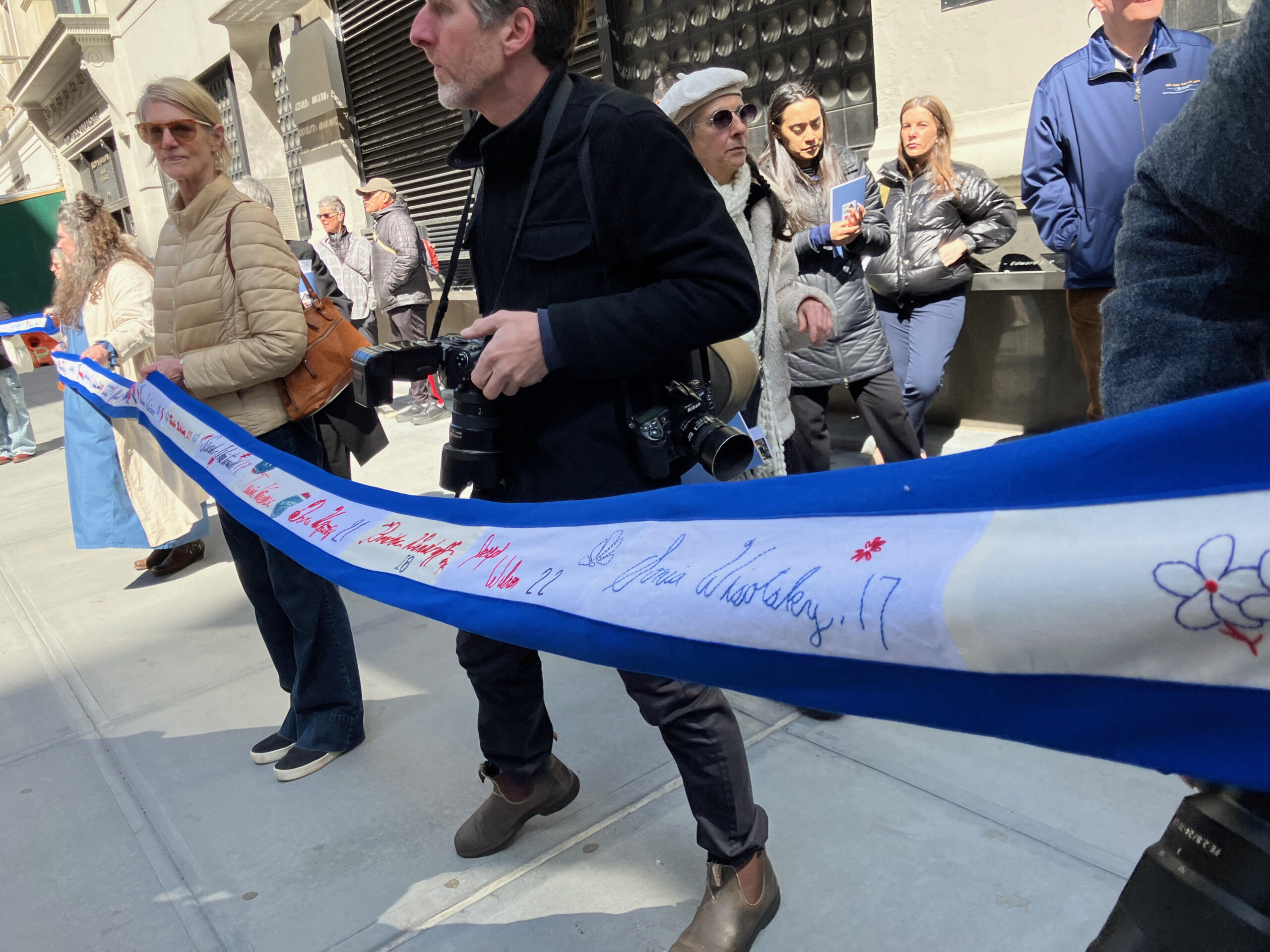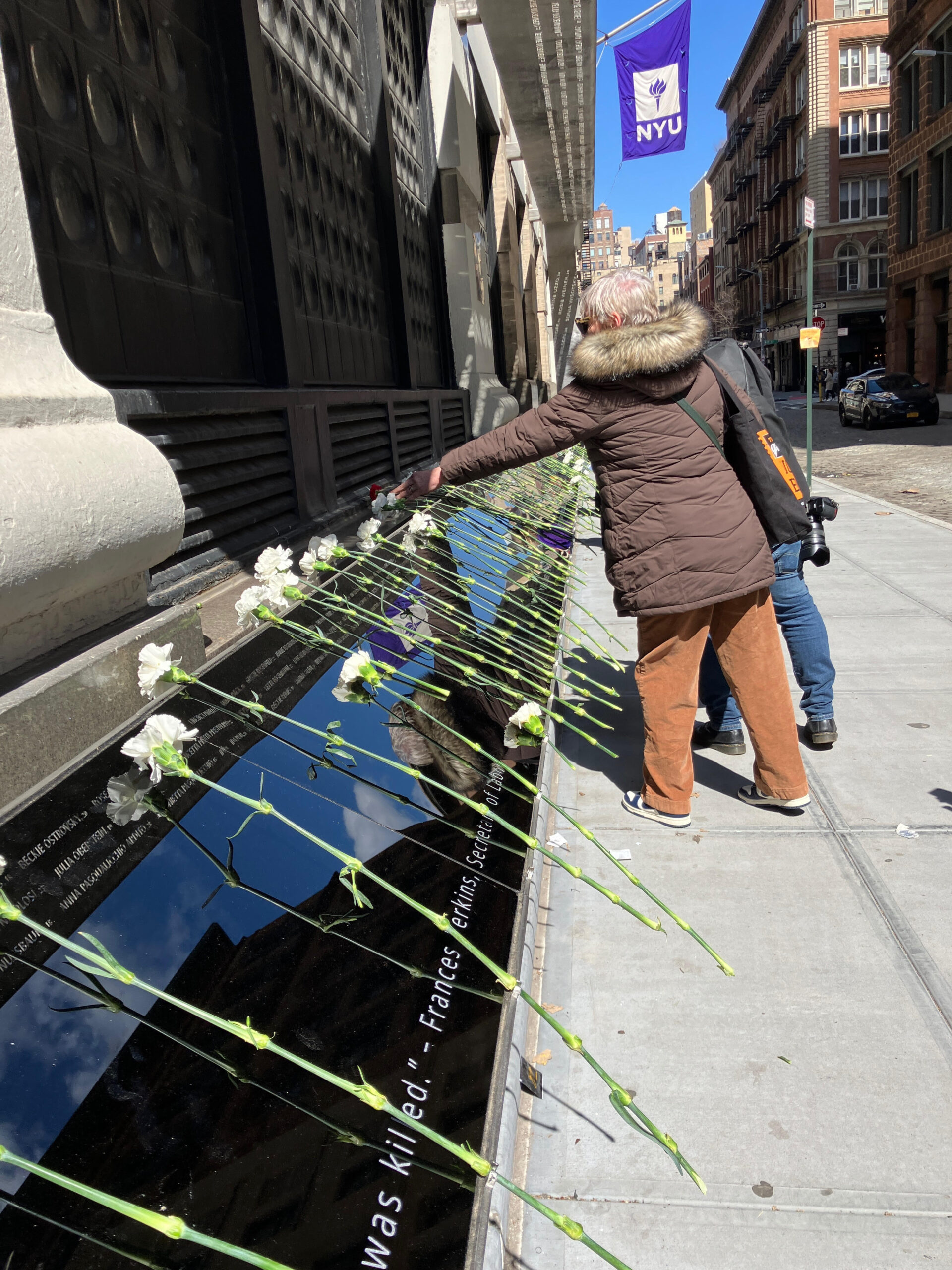Turning the corner from 8th Street to Greene Street on March 25, pedestrians came face to face with Ladder 20; the sight gripped them as the ladder was earnestly stretched to capacity to illustrate, once again, how the ladder of 1911 fell too short to rescue the 146 victims who perished in the Triangle Shirtwaist Factory Fire.
On that fateful day, the horse-drawn fire crews arrived just minutes after the flames started to rage in the 10-story Brown Building at closing time on a Saturday afternoon. It took just half an hour to douse the flames, but that was too late for the young women who perished in it.

Frances Perkins, the first woman to serve as U.S. Secretary of Labor under President Franklin Delano Roosevelt, was alerted to the tragedy, maybe even saw it for herself, and advocated for reforms. Fast forward to other worker-related protections such as OSHA, established nearly a half-century later in 1970.
Today, the Remember the Triangle Fire Coalition works with Workers United, the New York City Central Labor Council, the FDNY, New York University, and community groups to organize the annual remembrance activities each March 25 at Greene Street and Washington Place.

Thanks to their efforts and the contributions of many individuals, this story, which is retold each year, has been seared on the collective memories of the young – students and faculty report this incident looms large in labor history curricula.
Until the coalition was formed, there were just two small, nearly invisible plaques on the wall of the Brown Building. Since October 10, 2023, the tri-lingual memorial has featured the victims’ names engraved in a bold and graceful metal overhang, wrapping the first story of what is now NYU’s Biology building.
During the annual ceremony participants call out the 146 names and ages placing carnations on the panels that wrap around the building, shirtwaists billow from poles, and union leaders speak out.
The commemorations also feature new traditions. The group from Blue, the TATTER Textile Library — which opened its doors in 2017– attracted a group of students who were inspired to create an endless ribbon featuring individually embroidered names and the ages of the 146 victims.
The 1911 tragedy touched immigrant households–from Irish, Italian, Jewish, and more –and was in fact the primary reason why many Italian mothers tried to dissuade their daughters from becoming a seamstress or a designer. Back then, it could turn out to be a life-or-death choice.

Today the risk is not totally wiped out. According to Sustainability/Beat, a UK-based journal, companies like Foot Locker and Louis Vuitton are among the fashion brands known for “putting workers at risk by failing to eradicate forced labor across their supply chains.”
According to the report, Foot Locker scored just 2 out of 100 while Louis Vuitton didn’t fare much better with a score of 6. Canada Goose, TJ Maxx owner TJX and Prada all scored less than ten. Further, 77% of the benchmarked fashion companies source from at least one country at high-risk of forced labor.
At the other end of the spectrum, the highest performing company was Lululemon, which scored 63 for disclosing its stronger human rights due diligence efforts to address forced labor risks. Adidas and Puma were the only other apparel and fashion companies to score more than 50.
Indeed, the Triangle Shirtwaist Factory Fire is a story that must be retold, in honor of its victims, in hopes there will be fewer stories like it.
For more information, visit https://rememberthetrianglefire.org












